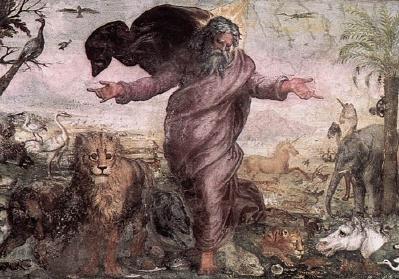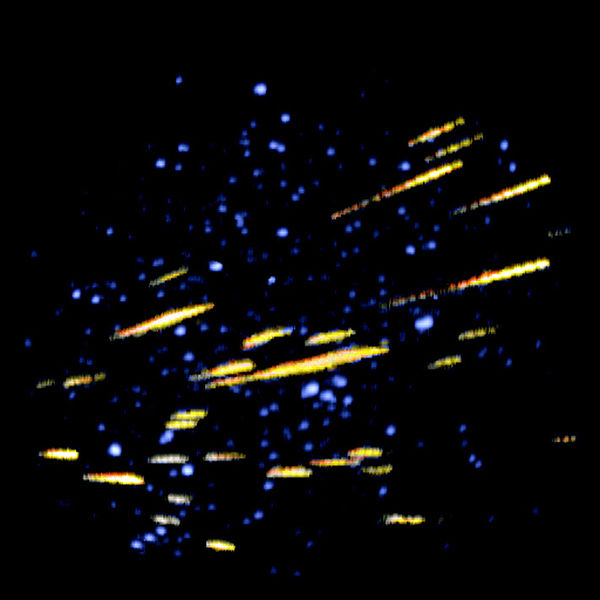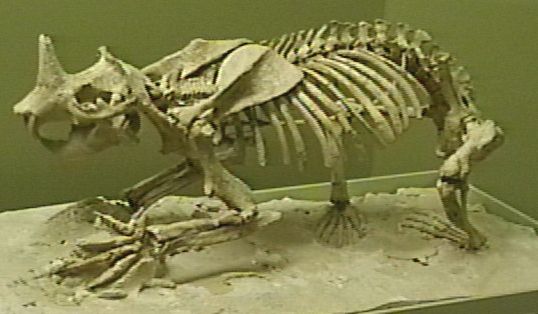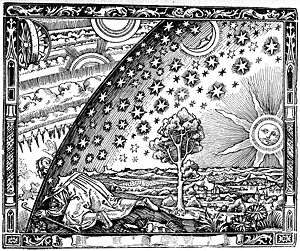ASA has long been at the forefront of major developing trends in issues of science and Christian faith. Part of our mission is to explore and understand new scientific advances and their implications for our faith. Since 1954, more than two dozen articles have appeared in our journal where “Adam” appears in the title. In the last decade, the human genome project has catapulted the issue of historical Adam and Eve to the forefront. The cover story of the June 2011 issue of Christianity Today describes “The Search for the Historical Adam,” leaning heavily on key publications and talks from the ASA as well as the BioLogos Foundation.
Our goal continues to be to provide a forum for active discussion on seminal topics. The issue of historical Adam and Eve is extremely important to all of us. Scientific data now seem to dispel any alternative theories allowing for a one-couple human ancestry from the biological perspective. How does this impact our faith? Further ASA Discussion....
Albert Mohler, "False Start? The Controversy Over Adam and Eve Heats Up
" The denial of an historical Adam and Eve as the first parents of all humanity and the solitary first human pair severs the link between Adam and Christ which is so crucial to the Gospel.
John A. McIntyre, "The
Real Adam and Original Sin," PSCF
58 (
2006): 90-98.
Peter Yoder, "Will
the Real Adam, Please Stand Up!,"
PSCF 58
(
2006): 99-101.
James P. Hurd, "Reply
to the Real Adam and Original Sin,"
PSCF
58
David Wilcox, "The
Original Adam and the Reality of Sin,"
PSCF
58
( 2006): 104-105. John A. McIntyre, "A
Reply to the Responders,"
PSCF
58
(
2006): 106-108.
(2006): 102-103.
George L. Murphy,
"Roads to Paradise: Christ, Evolution, and Original Sin," PSCF 58(2006): 109-119.more....
Peter Rust, "Early Humans, Adam, and Inspiration."PSCF 59 (2007): 182.
Two views of Genesis 1–11 are common. Young-earth creationism claims to take this text literally as inspired by God and interprets it as the history of the first few thousand years of the existence of the universe. Source criticism, on the other hand, takes it as an account of how ancient Hebrews viewed this history, God accommodating to their mythological beliefs derived from contemporary Near Eastern cultures, yet “breaking” these myths by framing them into monotheism. The former view is contradicted by science while the latter produces arbitrary hermeneutics and modifies biblical theology. But if Adam was not the first human created in the image of God, he can be taken as a real person who lived at a Holocene time in Sumer, but who, called to prepare the way for the Messiah to come, became a type representative of fallen humans living both before and after his time.

Perry G. Phillips, "Did Animals Die Before the Fall?," PSCF 58 (2006): 146-148.
Wilcox, David L., "Establishing Adam: Recent Evidences for a Late-Date Adam (AMH@100,000 BP)" PSCF 54 (2004): 49-55.
Philippidis, Alex," Cosmic Controversy: The Big Bang and Genesis 1," PSCF 47 (1995): 190-194.
J
ohnson, Beverly Howard "In The Beginning..." I Think There Was A Big Bang!" PSCF (1994): 58."Biblical Chronology: Legend Or Science?" James Barr, FBA , Regis Professor of Hebrew, University of Oxford
The Ethel M. Wood Lecture 1987 Delivered at the Senate House, University of London on 4 March 1987 -- introduction to a much disputed topic
Seung-Hun Yang "Radiocarbon
Dating and American Evangelical Christians, "PSCF
45 (1993): 229-240.
Radiocarbon
(C-14) dating has several implications for Christianity, particularly in terms
of the interpretation of the first part of Genesis. Since its advent in the
mid-20th century, it has been one of the central topics in the
creation-evolution controversy. As of the mid-1940s, radioactive dating had not
attracted serious attention from the majority of evangelicals. Since the
invention of the C-14 method and the appearance of evangelical
professionals in this field, however, American evangelicals have divided
themselves into two groups. One group has been made up of fundamentalist
evangelicals, who accepted the global effect of Noah's flood and a young
earth and rejected radioactive dates. The other, non-literalist group of
evangelicals accepted some kinds of evolutionary uniformitarian hypotheses
and radioactive dating.
Miracles
Miracles and Science: The Long Shadow of David Hume This paper is a translation of A. A. Louis, "Wonderen en wetenschap: De lange schaduw van David Hume," Omhoog kijken in Platland, ed Cees Dekker, Rene’ van Woudenberg en Gijsbert van den Brink, Ten Have (2007). Courtesy Biologos Foundation
The Noachian Flood
Three Biologos Articles on the Biblical Flood - Peter Enns June 2010
R. Joel Duff, "Flood Geology’s Abominable Mystery," PSCF 60 (2008): 166.
Flowering plants represent the dominant part of Earth’s plant life today. The origin of these plants was once referred to by Darwin as an “abominable mystery” because they appear so late and so abruptly in the fossil record. Flood geologists (creation scientists) seek to explain the origin of fossils and the majority of geomorphic features we see today as resulting from a global deluge. Thus, flood geologists must also be able to explain the observed appearance of flowering plants late in the fossil record. This article examines the fossil record of plant pollen and spores in light of the predictions of flood and standard geology. Predictions may be made, based on flood geology models, of how pollen and spores would be expected to be distributed in the geological column as the result of a global flood. These predictions may be tested by observations from the fossil record. The fossil pollen and spore record is shown to exhibit features which would not be predicted by modern flood geology theory. Hence, the burden falls to the flood geologist to explain the pattern of pollen and spores in a manner that accounts for the “undeniable reality” of observed fossil succession.
H
ill, Carol J., "Qualitative Hydrology of Noah's Flood," PSCF 58 (2006): 120-129.Hill,
Alan E., "Quantitative
Hydrology of Noah's Flood," PSCF
58 (2006):
130-141.
Arlen Blodgett, "Result
of a Survey of Archaeologists on the Biblical Flood," PSCF
57 (2005): 127-128.
Hill, Carol J., "The
Noachian Flood: Universal or Historical?" PSCF
54
(2002): 170.
Morton, Glen R.
The
Mediterranean Flood," PSCF 49 (1997): 238.
Siemens, David F., Jr., "Some Relatively Non-Technical Problems with Flood Geology"
PSCF 44
(1992): 169-174.
Age of Earth (further material)
Irons, Lee "Animal Death Before the Fall: What does the Bible Say?," Upper Register, 2007.
Fischer, Dick, Young-Earth Creationism: A Literal Mistake PSCF 55 (2003): 222-231. Biblical literalism” often is blamed when conservative Christians find themselves unable to cope with certain realities of this world and its encompassing universe, specifically, in respect to the great age of our surroundings—around 15 billion years for the universe and about 4.6 billion years for our global habitat. This article endeavors to shift the blame away from the written Scriptures, and place it squarely on the shoulders of those who to this point have been unable to comprehend them.
Watts, Rikki E., "Making Sense of Genesis 1" Contributed paper, June 2002.
Report
of the Creation Study Committee
(Presbyterian
Church in America, 2000).
A thorough
discussion illustrating the complexity of the age question for a
conservative denomination.
Westminster
Theological Seminary and the Days of Creation
A Brief Statement(1999).
Irons, Lee, Gen. 1.1-2.3
The
Framework Interpretation: An Exegetical Summary
PSCF (1998): 272.
Kline, Meredith G., "
Space
and Time in the Genesis Cosmogony" PSCF
48 (1996): 2-15
Neglect
of Geologic Data: Sedimentary Strata Compared with Young-Earth
Creationist Writings (1987) (PDF, 3.6 MB) by the late Daniel
E. Wonderly. This is a 2006
e-book
now available on-line through the ASA. Van Till,
Howard J.,
"The
Legend of the Shrinking Sun- A Case Study
Comparing Professional
Science and "Creation Science" in Action,"
PSCF
38 (1986): 164-174
This work is an attempt to enlist
creationists in a serious study of the actual characteristics
of the earth's sedimentary strata. Creationist organizations are
emphasizing some important
truths about creation, but they have
neglected the data of earth-science research... In this
carefully
documented book the author encourages evangelical Christians to take
an interest
in the real data of earth science...
Krause, David J. "Apparent Age and its Reception in the 19th Century," JASA 32 (1980): 146-150. Another old myth examined.
 Phillips,
Perry G., "Meteoritic
Influx and the Age of
the Earth,"
JASA
28 (1976): 14-16.
Phillips,
Perry G., "Meteoritic
Influx and the Age of
the Earth,"
JASA
28 (1976): 14-16.
Kline, Meredith G.
"Because
It Had Not Rained,"
Westminster Theological
Journal 20 (1958):146-157.
Used by Permission
General Papers
Graeme Finlay, et al., "Creation Versus Creationism," PSCF 58 (September 2006): 236-239.
A view from New Zealand.
Stephen M. Barr, "Retelling the Story of Science." First Things 131 (March 2003): 16-25.
Roberts, Michael "Taking Darwin and the Bible Seriously" (January 2001).
Schneider, Robert J., "Does the Bible Teach a Spherical Earth?" PSCF 53 (2001): 159 [PDF]
Morton, Glen R., "Language at the Dawn of Humanity," PSCF 54 (2002): 193.
Brush, Stephen, "Creationism Versus Physical Science," APS News November 2000. (a view from the outside)

Woodall, David L.
"The
relationship between Science and Scripture in the Thought
of Robert
Boyle," PSCF
49
(1997): 32-39.
Bernard Ramm, "The Relation of Science, Factual Statements and the Doctrine of Biblical Inerrancy," JASA 21 (1969): 98-104. An earlier discussion.
Wonderly, Daniel E., "Fanciful Bible-Science Stories Harm: A Call to Action," PSCF 44.2:131-133 (6/1992).
A good place to find countering arguments.
David A. Booth, Biological and Cultural Inheritance of the Image of God and of Original Sin |Audio | Slides | A lecture presented at the ASA/CIS Meeting, Edinburgh 2007.
Mark Shelhamer, Continuing Creation in
Neuroscience: Implications for Understanding
the Creator |
Audio
|
A lecture presented at the ASA/CIS Meeting, Edinburgh 2007.
George L. Murphy, Science-Theology
George L. Murphy,
"The
Need For Theology," PSCF
53 (June 2001):
72-73. The reports
of the April
2000 "Nature of Nature" conference in the July/August 2000
Newsletter
of the ASA and CSCA
by Glenn Morton and Bryan R. Cross bring out--I think
inadvertently--
A
Dialogue...
Ross H. McKenzie,
"Foundations
of the Dialogue between the Physical Sciences
and Theology,"
PSCF 56 (December 2004): 242--254.
A theoretical physicist gives
an
appreciative but critical review of recent work by Alister McGrath on
the dialogue between science and
theology. Some of the important areas
of dialogue that have been identified include the explicability and
rationality of the physical world, the “fine-tuning” of the
universe, and the faith involved in going from
“inference to the
best explanation.
Alister E. McGrath, "On Writing a Scientific Theology: A Response to Ross H. McKenzie," PSCF 56 (December 2004): 255-259. Alister McGrath responds to an important recent critique of his exploration of the dialogue between science and theology by the noted Australian theoretical physicist Ross McKenzie. The criticisms concerned relate to the use made of modern physics, the engagement with postmodernism, an evangelical perspective on theology, and fidelity to the thought of T. F. Torrance.
George L. Murphy, "Chiasmic
Cosmology and Atonement," PSCF 60
(December 2008): 214.
Traditional views of atonement have come
under attack recently. Not only have
specific theories been criticized, but some writers
reject the very idea of atonement. Since some arguments to this effect
have been based on scientific knowledge of the world, it is important to
develop an understanding of atonement that makes contact with the modern
science-theology dialogue. In this article,
that is done as part of the chiasmic cosmology
program in which the universe is seen in the context of a theology of the
cross. Sin is described here as a threat to creation, and a view
of atonement stressing the idea of “new creation” is presented. This
involves a reorientation toward God’s intended goal of the evolutionary
development of humanity and the world, which sin had thrown off course.
The work of Christ is then seen as the descent of the Creator in order to
re-create, the cross-resurrection event paralleling God’s initial
creatio ex nihilo.
The effects of this work on humanity are the death of
the human as sinner and the new life of the believer reconciled to God.
This article concludes with brief discussions of the Christ-Adam
relationship, the new creation theme in other models of the atonement, and
the cosmic scope of atonement.
Ladislav Kvasz,
"The
Invisible Link Between Mathematics and Theology,"
PSCF
56
(June 2004): 111-116.
If
we compare the mathematics of antiquity with that of the seventeenth
century, we find differences in a whole range of aspects. For the
ancients, notions like infinity, chance,
space, or motion fell outside
mathematics, while in the seventeenth century new mathematical
theories
about these notions appeared. I believe that this fundamental
change can be ascribed to the influence
of theology. For the ancients,
ontology and epistemology were in unity.
John E. McKenna,
"Natural
Theology," PSCF
49 (June 1997): 96. This
paper argues
that "natural theology" conceived as a conceptual
system antecedent to the interpretive framework
provided by the
self-revelation
Sara Joan Miles,
"From
Being to Becoming: Science and Theology in the
Eighteenth
 Century,"
PSCF, 43 (December
1991): 215.
Century,"
PSCF, 43 (December
1991): 215.
Voltaire (1694 1778) pseudonym of Francois - Marie Arouet French writer, the embodiment of the 18th Century Enlightenment -wikipedia
The 19th century
French historian, Ernest Renan, characterized the conceptual
shift
that took place during the 18th century as a change from being
to
becoming. At the beginning of the century, it was believed that
an immutable
God had created a static Nature and given us an absolute
revelation of Himself
in Scripture. Natural theology, utilizing Lockean
sensationalism,
Steven
Hall, "Toward
a Theology of Sustainable Agriculture," PSCF 54, ( June 2002):
1 - 5.
Terry M. Gray, "Give
Me Some of That Old-Time Theology: A Reflection on Charles
Hodge’s Discussion of Concursus in Light of Recent Discussions of
Divine Action in Nature," Contributed Paper, ASA Annual Meeting
July 26, 2002.
Howard
Van Till has
suggested that traditional theological categories are
unable to bear our current understanding of the
character of the
universe resulting from modern scientific investigation. He claims that
notions such as
“functional integrity” and the “Robust Formational
Economy Principle (RFEP)” are not compatible with
traditional
discussions of creation and providence.
Charles Hodge
Dorothy Boorse, "Anti-Aging: Radical Longevity, Environmental Impacts, and Christian Theology." PSCF 57 (March 2005): 55-64. Current biomedical research shows promise for prolonging human life spans. Responses to these possible technologies vary from extreme caution, to exuberance, to a futuristic vision of humanity transforming itself. Bioethicists express concerns about big social and individual costs. Some views are expressed in the rhetoric of a culture war similar to those over cloning, stem cell research, and euthanasia.
Allen G. Padgett,
"Dialectical
Realism in Theology and Science,"
PSCF
54
(September 2002): 184-192.
I
seek to provide a philosophical framework for bringing theology
and the
sciences into a closer relationship. This closer mutual modification can
be described as
developing a Christian and scientific world view. I
advocate, first of all, a dialectical approach, building
upon Greek
theologians (Pseudo-Dionysius and Maximus the Confessor) and a German
philosopher
(T. W. Adorno). I also argue that a sophisticated,
dialectical realism is superior to both naive realism
and anti-realism
for progress in the religion/science dialogue.
Harrison, Peter "The Bible and Emergence of Modern Science," Faraday Institute Lecture (5/24/2005) Lecture (19.4Mb) MP3
A helpful Web Site
John H Walton. The Lost World of Genesis One: Ancient Cosmology and the Origins Debate. IVP 2009
Proposes a reading of Genesis "faithful to the context of the original audience and author" and that the creation account does "not concern the material shape of the cosmos, but rather it's function."
John Brooke, et. al. eds.,
Science
in Theistic Contexts: Cogitative Dimensions, Osiris Vol.
16. History of Science Society, Chicago (2001).
John Brook and Geoffrey Cantor, Reconstructing Nature: The Engagement of Science and Religion, T&T Clark, Edinburgh (1998).
W. Robert Godfrey, God's Pattern For Creation: A Covenantal Reading of Genesis 1, R&R Publishing, Phillipsburg NJ (2003).
David C. Lindberg and Ronald L.
Numbers eds., When Science &
Christianity Meet,
University of
Chicago Press, Chicago (2003).
W. Mark Richardson and Wesley J.
Wildman eds., Religion and Science:
History, Method, Dialogue,
Routledge, NY (1996).
A helpful introduction to the field
North Carolina based non-profit organization established to promote the science of biblical archaeology by providing funding and support for research.
M
ore Recent Books
"Genesis
1-4: A Linguistic, Literary, And Theological Commentary," C. John
Collins
(Feb. 2006). PB. Expansion
of his 2003 work.
"The Genesis Debate : Three Views on the Days of Creation," J. Ligon, Lee Irons, Hugh Ross, M. Kline, et. al. (2000). PB. 24-Hour View, Day-Age View, Framework View are each presented and debated. Hermeneutical discussion of early Genesis for the most part.
"Genesis: The NIV Application Commentary." John H. Walton (Zondervan, 2001) Has done some creative thinking on the interpretation of Genesis 1.
"Reading Genesis One: Comparing Biblical Hebrew with English Translation," Rodney Whitefield (2003) PB. A thorough study of the first 35 verses of the Bible invalidates the view that the earth is young.
"God's Pattern for Creation: a covenantal reading of Genesis
1," W. Robert Godfrey
(2003). PB.
A
Literary/Theological study of Gen 1.
"Science & Faith: Friends or Foes," C. John Collins, (2003). PB. Hebrew/theological study. Argues the Analogical Days View.
Peter Enns, "Inspiration and Incarnation: Evangelicals and the Problem of the Old Testament, " 2005, Grand Rapids MI: Baker Academic. Short but valuable discussion of early Genesis interpretation.
Observation:
The last two decade have seen renewed interest by evangelical scholars iin the hermeneutics of early Genesis . However, these treatments have not been received with much enthusiasm by many conservative Christians. It is hard to replace older "concordistic" traditions with literary interpretations and difficult for busy scientists or the laity to seriously study the biblical literature. Moreover, to this point there is no treatment that joins the historical sciences and the Bible in a compelling fashion. Our biblical backgrounds are so diverse and emotionally ingrained and the details so difficult to pull together that it is best not to insist on any single approach. Rather. let us keep the discussion ongoing in friendly fashion-JWH


 __
__

I think those of us with interests in new interpretations can do better at practicing what Wright calls a hermeneutic of love/charity/generosity (over against a hermeneutic of suspicion) toward our spiritual fathers and mothers. Something like remembering to honor our fathers and mothers in the faith especially when we come to the conclusion that they were wrong.
Jedidiah Slaboda